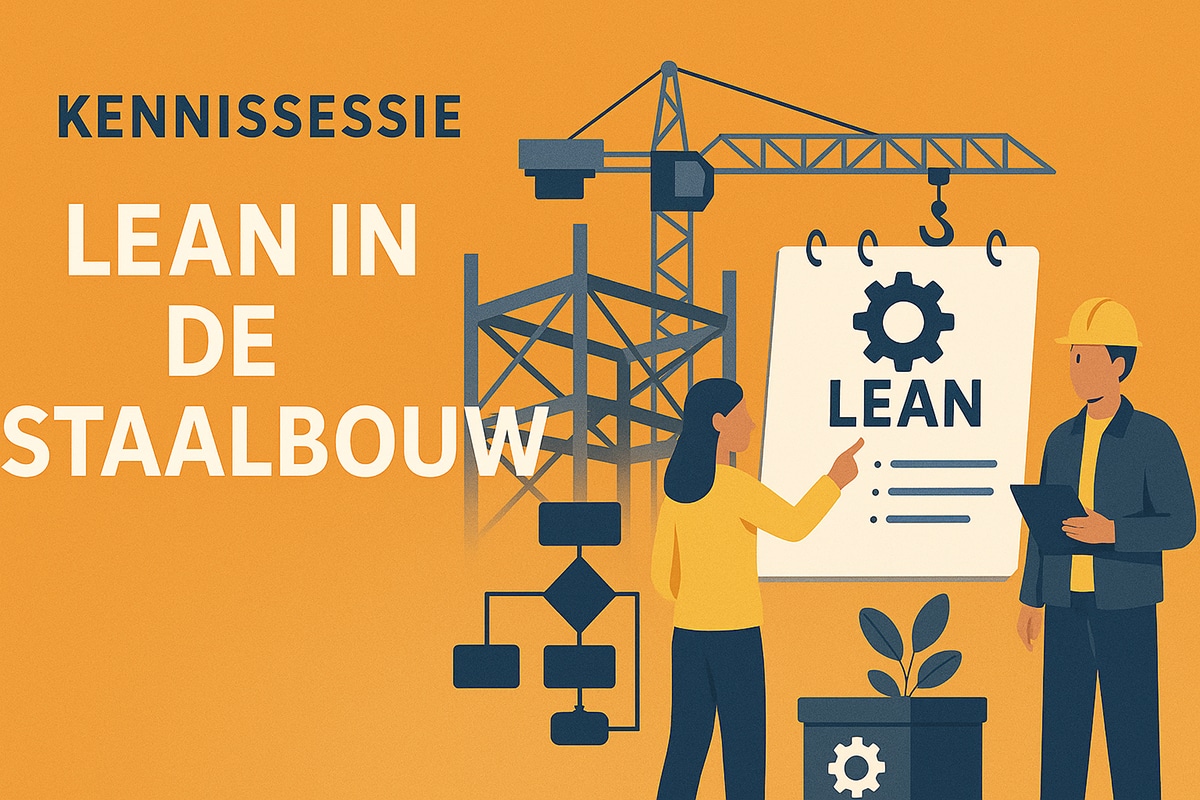
New rolling bridge marina Brouwershaven nears completion
Since late June, cyclists, pedestrians and wheelchair users have been able to cross the lock at the marina of Brouwershaven in Zeeland again. This is due to the construction of a rolling bridge, a similar version of which is also located in Middelharnis. The special feature of this bridge is that passers-by can operate it themselves at the push of a button without causing any inconvenience to shipping or boaters. The rolling bridge, commissioned by the municipality of Schouwen-Duiveland, is partly the result of the close collaboration between main contractor Hanse Staalbouw from Nieuwerkerk and machine builder Breston from Nieuwe-Tonge.
The Brouwershaven Town Council made a strong case for the new harbor bridge for many years. At the spot where the current bridge is placed, in the past there was a footbridge that did not return after maintenance. As a result, passersby had to walk all the way around the harbor to end up on the other side of the lock. With the advent of the rolling bridge, a steel structure connected to the lock, that inconvenience has been permanently eliminated. Besides the fact that a functional footbridge had to be realized, the main issue was to come up with a solution that would guarantee the safety of users and shipping and minimize any inconvenience. Throughout the entire project, Hanse Staalbouw and Breston worked well together and the mutual communication and coordination led to the desired end result.

Outdoor infrared scanner for presence recognition.
Realization
Hanse Staalbouw, a versatile manufacturer of steel structures for the construction, industrial and mechanical engineering sectors, among others, was leading the process of realizing the new facility as general contractor. Work in which Mariëlle Verhoek (work planner) and Martin van de Beek (foreman) were closely involved. Since the end of June, the 14-meter-long and 1.20-meter-wide rolling bridge bridges the 8.5-meter lock in the Brouwershaven marina, and passersby can use it. "The bridge deck is completely assembled in our workshop and consists of girders with cut and set plates for the purpose of cabling and outriggers for the railing," Van de Beek said. "The railing, rails and platform outlets were also completely welded in our workshop, so that only the structure had to be set up and the railing assembled on site. The entire steel structure was finished to a high standard so that it could be provided with a C5M coating, which is suitable for the salty climate." Hanse Staalbouw not only manufactured the steel bridge structure, but also provided the engineering, foundation work, rail system and assembly on site.
Challenges
Verhoek and Van de Beek are pleased with the final result, which, however, was not entirely erected without a struggle. "Although in principle it is a fairly simple steel structure, we faced some logistical and technical challenges during its installation," Verhoek says. "During construction, there was no crossing to the other side of the lock bowl. The 14-meter-long bridge, platform spouts and rails had to be brought over the bike path on the dike. In addition, 100 meters of hose were needed to get the concrete needed for the foundation on the other side of the lock bowl in the right place. The conduit for the electrical cables also required quite a bit of work. There was an existing, 50-year-old conduit, but it was completely clogged and therefore no longer usable. In consultation with the municipality of Schouwen-Duiveland, we therefore devised a new conduit. Specifically, this involved a stainless steel 316 pipe with a diameter of 220 millimeters, welded with 5D bends in a 'U' of 4.5 by 11 meters. We fitted it with approximately 1,000 kilograms of counterweight and sank it to the bottom of the lock chamber using a crane barge. Afterwards, Breston was able to pull the necessary cabling through the pipe without any problems."
Experiences
However, Breston's contribution was not limited to just the cabling alone. This is evident from the words of Peter Aarnoudse, electrical & assembly manager on behalf of the family business. Specialized in, among other things, the construction of various machines and control panels, Breston in Brouwershaven gave a successful follow-up to an earlier project carried out in Goeree-Overflakkee. "That involved the automation of a bicycle bridge," Aarnoudse explains. "The experience we gained there ensured that we were able to properly assess the assignment in Brouwershaven and tackle occurring problems, such as realizing the cable transit to the other side of the lock bowl, in a timely manner."
Access column
The work performed by Breston can be called diverse and extensive. The company provided the main control system and, according to the applicable NEN standards, laid both the cable route and the detection and signaling facilities. In addition, it performed the mechanical engineering and force calculation of the bridge. The operating columns, also supplied and installed by Breston, deserve a more detailed explanation, according to Aarnoudse. "The standard parked bridge gives shipping free passage. In that case, the bridge access is completely closed with a fence. When a cyclist, pedestrian or wheelchair user wishes to cross the lock, they sign in by pressing a button on the stainless steel access column. On a screen, equipped with a tempered glass front, the passerby can then follow the bridge process in terms of time." That bridge process includes a scan of any obstacles in the lock. When it is clear, the bridge rolls over the lock. During this movement, the bridge deck is also intensively scanned. "To this end, we have applied 2D scanners, among other things," says Aarnoudse. "The information gathered with this is then processed on a safety PLC. No movement takes place if anything is detected in the scanning field. In short, the safety of the bridge is at a very high level; nothing is left to chance. The clever combination of drive, control, safety and operation makes a decisive contribution to this."




